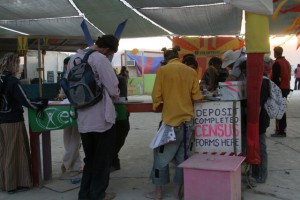Recently, some urban planners and politicians have touted nurturing artistic, creative professionals as the means for revitalizing or gentrifying urban areas. However, poorer and less politically powerful locals may eventually be displaced as rents and property values rise. In addition, funding for the arts is still relatively scarce, and art galleries and museums tend to favor star artists with international reputations. Artists thus face several challenges in producing their art – getting resources to do the art, developing relations with supportive colleagues and institutions, and finding places to share their art.
While alternative art venues like Burning Man can help with such issues, community-based collectives are also important to supporting local artistic activities, as argued by Yasmin Ramirez of Hunter College, City University of New York (CUNY). Last night, I attended a talk by Ramirez, who discussed the importance of local networks in supporting the arts. She also presented the results of a survey of artists of color who had applied for an arts grant from the Urban Artist Initiative. Her report is available here.

